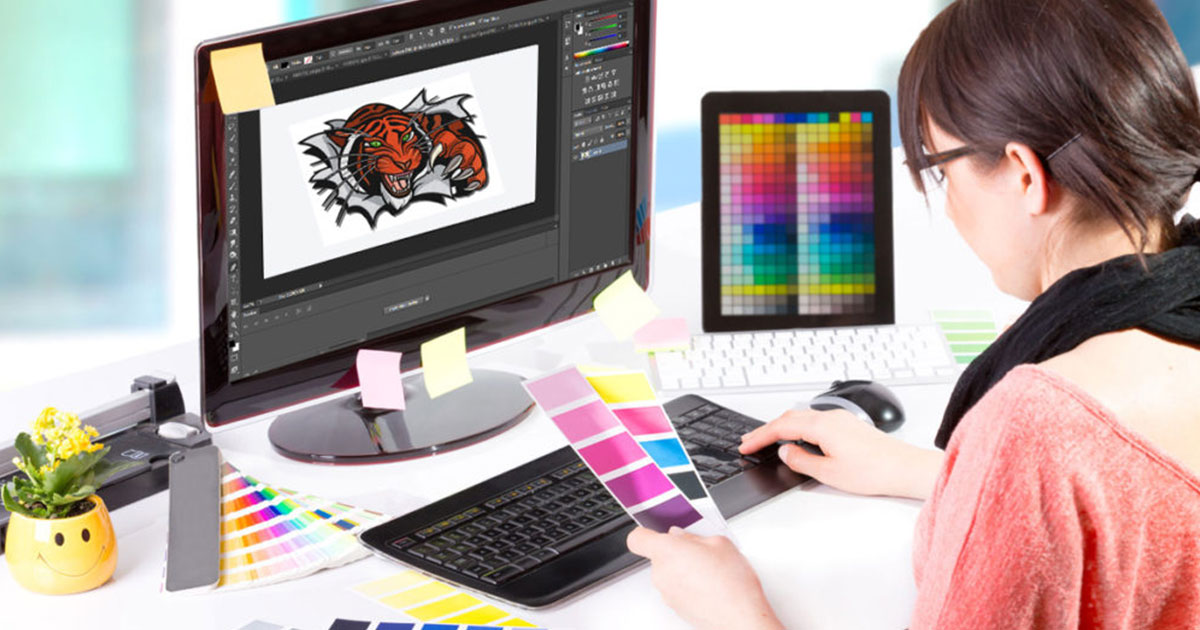Finest Digitizing for Embroidery: Boost Your Projects
Finest Digitizing for Embroidery: Boost Your Projects
Blog Article
Grasping the Embroidery Digitizing Process: Your Ultimate Overview
Embroidery digitizing is a thorough craft that requires precision and proficiency to convert detailed layouts into digital layouts for equipment needlework. As craftsmens embark on this trip to understand the needlework digitizing process, a thorough understanding of the basics sets the foundation for excellence. Past the primary knowledge exists a realm of sophisticated software program, specialized tools, and nuanced techniques waiting to be discovered. By delving into the subtleties of digitizing, one can open a world of creative opportunities and boost their needlework tasks to new heights.

Comprehending Embroidery Digitizing Basics
Needlework digitizing basics form the foundation whereupon complex designs are converted into machine-readable layouts for accurate sewing. This first action in the embroidery digitizing process is critical for making certain that the last embroidered product is a loyal representation of the original layout. Recognizing embroidery digitizing fundamentals includes understanding vital ideas such as stitch kinds, sew direction, density, rug, and pull compensation.
Stitch kinds play an essential duty in figuring out the aesthetic and textural result of the stitched layout. By picking the ideal stitch kind, whether it be satin, fill, or running stitch, digitizers can achieve the preferred result and boost the overall high quality of the needlework. In addition, sew instructions affects the circulation and dimension of the style, while thickness figures out the spacing and coverage of the stitches.
Additionally, underlay stitching gives security to the layout by protecting the textile and preventing distortion throughout the needlework process. Pull compensation is one more necessary factor to consider to counteract the all-natural tendency of material to contract when stitched. Grasping these embroidery digitizing basics is basic for creating professional-quality embroidered items.
Choosing the Right Digitizing Software Application
Selecting the proper digitizing software is a crucial decision that substantially affects the efficiency and quality of the embroidery digitizing process. Digitizing for Embroidery. When picking the best digitizing software, it is important to take into consideration aspects such as the intricacy of styles you prepare to produce, the user-friendliness of the software application, the degree of client support offered, and the compatibility with your embroidery maker
There are different digitizing software choices available in the market, ranging from standard programs for newbies to advanced software program for expert digitizers. Some prominent choices consist of Wilcom EmbroideryStudio, Hatch Embroidery Software Program, and PulseID. These software program bundles provide a wide variety of tools and functions to help you create intricate layouts effortlessly.
Prior to deciding, it is a good idea to check out the different software alternatives with complimentary trials or demos to establish which one ideal fits your needs. In addition, reviewing evaluations and seeking recommendations from seasoned digitizers can supply important insights right into the staminas and weaknesses of each software plan (Digitizing for Embroidery). By very carefully assessing your requirements and contrasting the features of various digitizing software application, you can make an educated selection that improves your embroidery digitizing operations
Digitizing Tools and Strategies

Optimizing Layout Setup for Needlework
Grasping the complexities of style settings is fundamental in achieving optimal lead to the needlework digitizing procedure, building upon the foundation laid by understanding digitizing devices and strategies. When maximizing style settings for embroidery, it is vital to take into consideration variables such as stitch kind, density, underlay, draw settlement, and enrollment. Stitch type option affects the general look and feeling of the layout, with choices like satin, fill, and running stitches providing different appearances and results. Thickness refers to the spacing and density of stitches, influencing the style's coverage and durability. Proper padding sewing offers stability and protects against textile distortion, particularly for complex designs or on stretchy products. Draw payment adjusts for fabric stretch throughout stitching, making sure precise design duplication. Enrollment settings align various aspects of the design accurately, have a peek here keeping general style integrity. By fine-tuning these style settings, embroiderers can improve the quality and precision of their stitched creations.

Troubleshooting Common Digitizing Issues
When running into typical digitizing concerns during the needlework procedure, it is vital to recognize the root triggers and apply effective remedies quickly. One typical trouble is stitch density problems, where stitches might be too dense, creating the textile to pucker, or as well thin, leading to spaces in the layout. Readjusting the stitch density settings in the digitizing software program can help fix this concern.
An additional frequent challenge is string breaks during the needlework procedure. This can happen as a result of various factors such as incorrect stress setups, dull needles, or using low-grade string. Guaranteeing appropriate maintenance of the embroidery machine, consisting of normal needle changes and tension adjustments, can decrease the occurrence of thread breaks.
Additionally, design registration errors can result in misaligned components within the embroidery design. Checking the design alignment in the digitizing software and making required adjustments before stitching can assist in avoiding this issue. By dealing with these common digitizing issues promptly and effectively, you can ensure a smoother embroidery procedure and top quality finished items.
Verdict
Finally, understanding the needlework digitizing process requires a strong understanding of the essentials, the ideal choice of software, and expertise Extra resources of devices and techniques. Optimizing layout setups and troubleshooting common digitizing concerns are vital action in ensuring high-quality needlework results. By adhering to these actions carefully, one can achieve accuracy and effectiveness in go right here the digitizing process.
Report this page